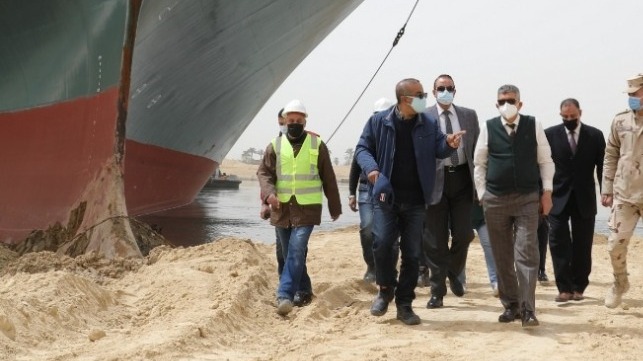Suez Canal Shutdown Highlights Vulnerability of Maritime Chokepoints

Suez Crisis Highlights the Fragility of the Global Supply Chain.
First came the pandemic of 2020, roiling shipping and disrupting the supply chains in and out of China before spreading out to the rest of the world. Then came one of the biggest hurdles the logistics industry has faced in years – a six-day closure of the Suez Canal, caused by the grounding of the 20,000 TEU container ship Ever Given.
An estimated 12 percent of the world's trade passes through the Suez Canal daily, representing almost $10 billion in value, according to Llyod's List. Serving as the link between Asian manufacturing powerhouses and wealthy markets in Europe, it is among the most important waterways in the world.
50 ships transit the Suez Canal every day, according to the SCA. In 2020 alone, almost 19,000 vessels with a net tonnage of 1.17 billion tonnes transited the 100 nm long waterway, making it the second-busiest year in the history of the canal.
The pandemic exposed the fragility of the global supply chain, with container shipping rates tripling after shipping companies cut down on fleet capacity in expectation of falling demand. The boxship fleet is now more active than ever, but it can hardly keep up with the pace. Demand is so high that an ongoing container shortage has caused a headache for shippers and consumers alike, forcing ocean carriers to make decisions about where to allocate scarce containers.
Even though the worldwide logistics industry has amassed a high degree of efficiency when it comes to manufacturing goods and adhering to tight schedules, as well as keeping costs to a minimum, if the Suez Canal closure would have been prolonged further, it could've had a cascading downstream disruption of trade with vast economic repercussions. In simple words, everyday consumers would have had to pay more for everyday goods, ranging from Amazon orders to gasoline. Governments had to frame contingency plans aimed at countering the crisis: In war-torn Syria, the government began rationing fuel as the blockage of the Suez Canal stretched into a sixth day.
The Suez Canal and the Panama Canal form two of the most critical choke points in the global maritime domain, along with the Strait of Malacca and the Strait of Hormuz. These chokepoints are perhaps some of the biggest vulnerabilities in the global supply chain, and shipping interests will likely include the risk of a shutdown on the Suez Canal into their plans going forward.
